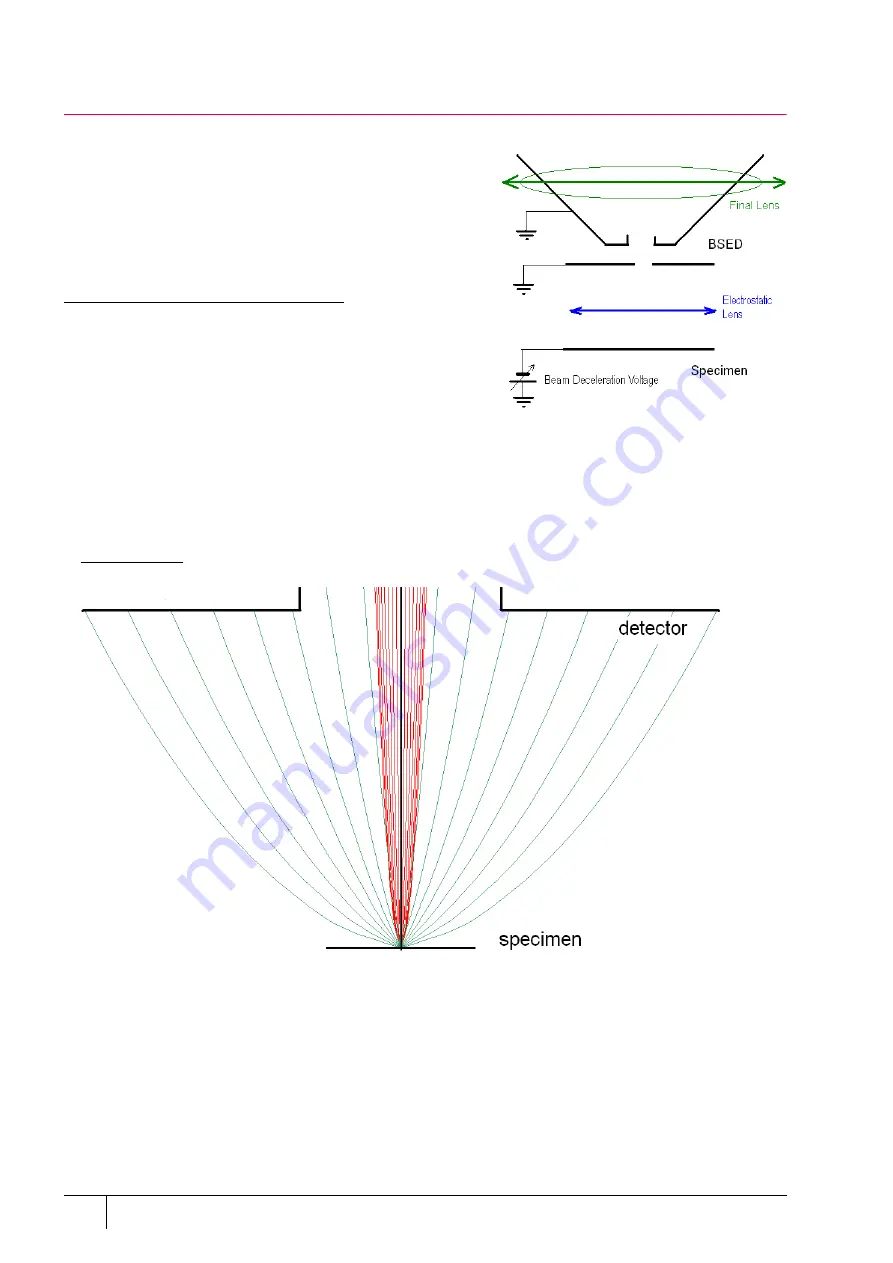
Operating Procedures: Beam Deceleration
5-20
User Manual
C O N F I D E N T I A L –
limited rights
Feb 2018
Revision A
Beam Deceleration
The Beam Deceleration (BD) mode is based on a negative voltage
(bias) applied to a stage (i.e. a sample). An electrical field is
formed between the sample and the nearest surface over it (a
column bottom or a detector). This field acts as an additional
electrostatic lens. Its power is described by the Immersion Ratio
(imRatio) parameter.
Detection Principles
Beam Deceleration influences both primary and detected
electrons.
As the sample is at a negative potential with respect to the
ground and detectors, the initial SE and BSE energy (when leaving
the surface) is accelerated by the Stage Bias before the detection.
The higher the Immersion Ratio is, the lower the difference
between SE and BSE energies is when detected.
Signal electrons are accelerated upwards and deflected towards the column axis.
The SE’s have a low initial speed. They are usually absorbed into the detector central hole, continue through and
can be detected by in-column detectors (T2 and T3).
Conversely, the BSE, heading nearly parallel to a surface (which normally cannot be detected), are driven to a
detector.
By changing the Stage Bias, the output angle of electrons leaving a surface can be changed.
FIGURE 5-8:
Typical trajectories of secondary (red) and back scattered (green) electrons
Detectors most convenient for Beam Deceleration are BSE detectors placed closely under or directly inside the
column. Their efficiency depends on their active area – the smaller the inner diameter of the active area is, the
better. The standard ETD can also be used, but its efficiency is low.
















































